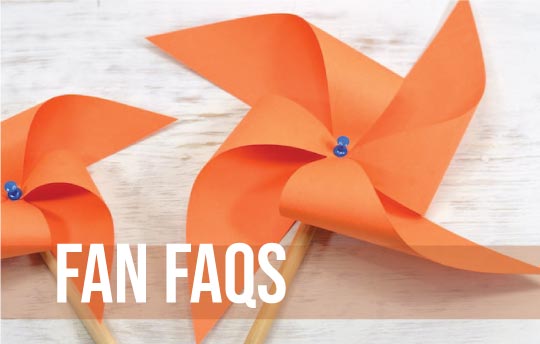
“Coolness meets ingenuity in the realm of fans.”
Q1: How to pick the best ceiling fan for a home?
– A: Here are some vital factors to consider when selecting a ceiling fan. Besides budget, these factors are the fan size, style, airflow, energy consumption, and the type of motor used.
Q2: What is the ideal size of a ceiling fan for a room?
– A: The ideal size of a ceiling fan depends on the size of the room. Typically, a sweep size of 900mm is ideal for small rooms measuring up to 80 sq ft.
For medium-sized rooms of approximately 150 sq ft, a sweep size of 1200mm is recommended. Lastly, a sweep size of 1400mm is suitable for larger rooms spanning up to 225 sq ft.
Q3: What is the difference between BLDC and induction motors in ceiling fans?
– A: BLDC stands for brushless direct current, which is a type of motor that uses permanent magnets and electronic commutation instead of brushes and slip rings. Induction motors are the conventional type of motors that use electromagnets and mechanical commutation.
BLDC motors surpass induction motors in terms of energy efficiency, noise reduction, and durability. These motors demonstrate superior efficiency, ensuring optimal energy usage. Additionally, they operate quietly, minimizing unwanted noise disruptions.
Moreover, BLDC motors exhibit exceptional durability, providing long-lasting performance and reliability.
Q4: What are the benefits of remote-controlled ceiling fan?
– A: Remote-controlled ceiling fan offer convenience and comfort to the users. Users are able to conveniently modify fan speed, direction, and timer settings without needing to leave their seats. Certain fans with remote control capabilities even offer advanced functionalities such as sleep mode, breeze mode, and reverse rotation, enhancing their overall intelligence.
Q5: Which are the best ceiling fan brands in India?
– A: Following are some of the best ceiling fan brands in India that offer fans with elegant colours, designs, best-in-class technology, and energy efficiency:
– Crompton
– Havells
– Luminous
– Orient
– Usha
– Bajaj
– Atomberg
Q6: How to clean and maintain a ceiling fan?
– A: Cleaning and maintaining a ceiling fan is essential for its performance and longevity. Here are some tips to follow:
– Switch off the fan and disconnect it from the power source before cleaning.
– Use a soft cloth or a vacuum cleaner to wipe off the dust from the blades and the motor.
– Use a mild detergent or soap solution to clean any stains or grease from the fan.
– Dry the fan thoroughly before reconnecting it to the power source.
– Lubricate the motor bearings with oil or grease as per the manufacturer’s instructions.
– Regularly inspect the screws and bolts and tighten them if they are found to be loose.
Q7: How to install a ceiling fan?
– A: Installing a ceiling fan requires some basic tools and skills. Here are the steps to follow:
– Identify the location where you want to install the fan and mark it on the ceiling.
– Drill holes on the marked spots and insert anchors or hooks to support the fan.
– Assemble the fan components as per the manual and attach them to the ceiling bracket.
– Connect the wires from the fan to the wires from the power source using wire nuts or connectors.
– Secure the canopy or cover over the wires and fix it with screws.
– Evaluate the fan by turning it on and assessing both its speed and direction.
Q8: How much electricity does a ceiling fan consume?
– A: The electricity consumption of a ceiling fan depends on its wattage, speed, usage, and efficiency. Generally, a standard ceiling fan consumes around 70-80 watts of power at full speed. However, energy-efficient fans with BLDC motors can consume as low as 28 watts of power at full speed.
To determine the electricity usage of a fan, multiply its wattage by the number of hours it is used and divide the result by 1000. For instance, if a fan has a power rating of 70 watts and is operated for 8 hours daily, the electricity consumption can be calculated as (70 x 8) / 1000 = 0.56 kWh or units per day
Q9: What are some of the latest trends in ceiling fan?
– A: Some of the latest trends in ceiling fan are:
– Smart fans that can be controlled by voice commands or mobile apps
– Decorative fans that have LED lights, fancy blades, or unique shapes
– Underlight fans that have integrated lights under the blades or motor
– Anti-dust fans that have special coatings or materials to prevent dust accumulation
– High-speed fans equipped with aerodynamically designed blades and robust motors for delivering exceptional airflow
Q10: What are the advantages and disadvantages of ceiling fan?
– A: Some of the advantages of ceiling fans are:
– They provide cooling and ventilation to the room
– They are cheaper and more energy-efficient than air conditioners
– They are easy to install and operate
– They come in various styles and designs to suit different preferences
Some of the disadvantages of ceiling fans are:
– They can be noisy and wobbly if not maintained properly
– They can cause injuries or accidents if not installed securely
– They can collect dust and dirt over time
– Their function is limited to air circulation, rather than actively reducing the temperature of the air. These devices are capable of cooling by means of air movement and circulation, but they do not have the capability to actually lower the temperature of the air itself.

